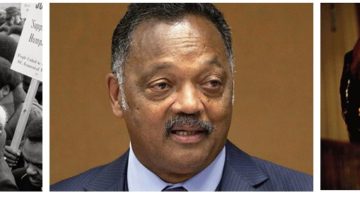 KANSAS CITY, Mo. (AP) _ No one was sure what became of America's black Moses after he sought to lead his people to the promised land. Historians could recite virtually every other pertinent detail of Benjamin “Pap'' Singleton's remarkable life.
KANSAS CITY, Mo. (AP) _ No one was sure what became of America's black Moses after he sought to lead his people to the promised land. Historians could recite virtually every other pertinent detail of Benjamin “Pap'' Singleton's remarkable life.
Born into slavery the same year Abraham Lincoln took his first breath _ 1809 _ Singleton escaped bondage as a young man then returned to the South as a much older one to lead the exodus of freed blacks northward in the 1870s.
“Ho for Kansas!'' read one of the many fliers Singleton handed out across the old Confederacy, as he urged former slaves to escape the racist, oppressive policies of Jim Crow that took root after Reconstruction.
Still, the people who write history books were noticeably fuzzy on when and where the leader of the “exodusters'' was spending eternity. Most biographies said he died in 1892 in St. Louis. Others said Topeka, 1883. No one had good evidence for either.
Pap Singleton, as it turns out, is buried here in Kansas City.
In the end, the key to the mystery emerged in less time than it took to bury him. Although, finding just where in town he ended up took two years of determination by a pair of Kansas women who sought to set the record straight.
Ol' Pap, as he was known, lived longer than anyone figured. Records show he resided at 923 W. 8th St. in the West Bottoms until his death at the age of 90 on Feb. 17, 1900.
Nine days later, he was buried in what was known as the “colored section'' of Union Cemetery. Presumably he's up there still, somewhere, beneath a grassy slope amid dozens of other nameless burial plots.
The exact location might never be known. Wooden markers that stood on many of the graves have all rotted away. The few limestone monuments left standing in Section 1 were rubbed smooth by the elements.
Still, the evidence collected by genealogists Marcia Schuley of Manhattan and Judy Sweets of Lawrence _ along with the research of Lin Fredericksen at the Kansas Historical Society _ is conclusive. Funeral home and cemetery records prove it. The Library of Congress is convinced, and corrected its own records.
It's not as if Singleton faded away in his last years. He still rated a news story on Page Two of The Kansas City Star on the day after his death.
“He was once a slave,'' the headline read, and the article went on to note his fame for being “instrumental in getting a band of negroes to leave the South for the Northern states.''
It was only a brief notice, but biographical sketches written since provide greater context.
After the Civil War ended in 1865, federal troops continued to occupy the former rebel states for another dozen years. During that time, freed slaves began exercising the rights they were promised with emancipation, such as voting and running for office.
But within a decade, the white power structure that existed during slavery regained power. By the time troops left, white southerners were passing laws restricting the rights of black people, while groups like the Ku Klux Klan became violent.
The only way African Americans could thrive, Singleton believed, was to head north. From the mid-1870s to around 1880, Singleton organized thousands of former slaves to follow him to Kansas.
He set up one colony in the southeast corner of the state and another in the Flint Hills on the former Kaw Indian Reservation near Dunlap.
“I have been fetching out people,'' he told a special U.S. Senate committee in 1880 that was investigating the “Negro exodus from the southern states.''
Why Kansas?
“For the want of land,'' he testified. “We needed land for our children.''
Kansas had plenty of land, but the influx of so many poor black people into the mostly white state caused great commotion. While many of the early settlers Singleton convinced to come north had some means to survive until they could make a crop on the land he found them, the thousands who came later didn't and eventually scattered.
With the exception of Nicodemus, none of the settlements survived and Singleton's plan to repopulate the West was seen as a failure.
“All they wanted was freedom and land,'' said retiree Jim Sharp of Manhattan, who's written a book about Singleton and his colony in Morris County. “But it was tough to make a living.''
Singleton made headlines again in the mid-1880s. His Trans-Atlantic Society advocated that blacks return to Africa. While others led similar efforts, his never flourished and so began his fade from public life.
In the half century since the civil rights movement blossomed, there's been a growing interest in black history. Figures once obscure to many Americans, black and white, have now become icons.
“He is one of the most important black men in Kansas history,'' Sharp said.
Separately, Schuley, Sweets and Fredericksen came to the same conclusion. Fredericksen hit on it while planning an event in 2010. Schuley and Sweets became interested a year later, coincidentally and independently, while tracing the roots of an exoduster descendant whose ancestors had moved from the South to one of Singleton's settlements.
All three researchers were determined to fill in the gap that other historians hadn't plugged.
Fredericksen said she and others at the historical society “were looking for exoduster information at the time and realized there was some question where Pap Singleton died.''
Years ago, that would have taken a tedious and perhaps fruitless search of old records and newspapers, she said. But thanks to a Library of Congress project to digitize old newspapers _ look up Chronicling America on the Web _ Fredericksen was able to find The Star obituary. She located his death certificate just as easily by checking with the Missouri secretary of state's office, which has digitized its records and makes them available on the Web.
“It took like 15 minutes to solve something that hadn't been solved for years,'' she said.
Fredericksen alerted the Library of Congress to her find and posted the information on the Kansas Memories blog. That was in February 2010.
A year and half later, Schuley and Sweets met through their mutual client. And shortly after that, Schuley went on a tour of one of Singleton's exoduster colonies. Sharp was the guide.
“I took Jim's tour,'' she said, “and was inspired by his enthusiasm for Pap Singleton and his emphasis that the grave must be found.''
That next day she came across Fredericksen's blog post, told Sweets about it, and for the past 18 months or so they've been on a hunt.
They phoned and visited Kansas City funeral homes and cemeteries, some more than once, trying to find the final resting place of Singleton.
This month, their determination finally paid off when documents at McGilley's Midtown Chapel led them to Union Cemetery and its records.
“Once you've reached your goal,'' Schuley said, “what happens? Oh, my gosh, what now?''
What's left to do now, all of those involved in the search say, is to raise the money to honor Singleton with a proper monument noting the dates of his birth, death and some of the epic story that played out in between. They're working on it
“I always thought we ought to get one built,'' Sharp said, “if we ever find where he was buried.''
A man with Singleton's place in history, he said, deserves no less.












No Comment